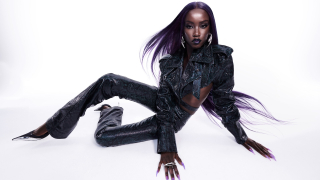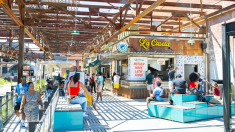I wasn’t looking forward to returning to my classroom at the HBCU where I teach the Monday morning after George Zimmerman was acquitted for the viciously inhumane murder of Trayvon Martin. It appeared that I, and everyone around me, was wearing the verdict like a second, unsavory, bruised and battered skin. I watched them all, a classroom full of young Black men very near the age Trayvon was when his future was stolen, and I found it difficult to fight back the tears.
The activist in me chose not to retreat in sadness, but instead to peek into the minds of my students as they examined Jelani Cobb’s piece in The New Yorker, which focused on Zimmerman’s newfound freedom. As we deliberated on the case, the conversation turned to various protests being organized around the city. One of my students, obviously as sore as I was about it all, passionately rejected the idea of “marching.”
It’s not his fault. Through our desire to move towards post-racialism (which will never come), we have turned the struggles of our ancestors and elders into a travesty, a caricature, a bunch of inaction. My students believe it’s time to do something different. And maybe so. Maybe we have become wiser in our approach to changing the structures and institutions of racism (which this nation seems more committed to than peace).
Our activism has met the age of the Internet, where the NAACP can urge individuals to petition the Department of Justice, requesting that they charge George Zimmerman with violating Trayvon’s civil rights, and receive massive support almost instantaneously. Our age has produced social protest through social media—where Genie Lauren, fed up with Juror B37’s attempt to profit from the Zimmerman trial (and, by proxy, Trayvon’s death), was able to create a petition that eventually led to the juror’s book option being dropped by a potential publisher. It’s a new day, and I’m excited to see how the modern age and the fight for human rights intersect.
But we can certainly progress in our abilities to organize and “do the work” without ridiculing the nonviolent social protests and civil disobedience that brought us closer to freedom, whether we believe we are free or not as Zimmerman walks. When we examine organized movements like those carried out by Dr. Martin Luther King Jr. in Montgomery, Ella Baker organizing lunch counter sit-ins, The Freedom Riders, or even the Little Rock Nine, we realize just how important nonviolent protest has been, and why it’s still an important aspect of our human rights movements today.
“While in some cases we can be quick to dismiss nonviolent resistance as passive, it is anything but,” says Dr. R. L’Heureux Lewis-McCoy, assistant professor of sociology and Black studies at The City College of New York, as we spoke about the significance of civil disobedience in the African-American community’s movements. According to Lewis-McCoy:
“For protestors who feel a passion—in many cases a fire for a cause—the ability to withhold individual urges, even compromise their safety, for the will and the goal of the collective is astounding. From hate-filled slurs to physical abuse, these soldiers of justice endured the trials of the battle to make a global statement about the place and potential of the oppressed. While in a moment they may have been brutalized, they remained unbowed, which is a lesson we can all learn from.”
When questioned about nonviolent resistance, Dr. Blair Kelley, associate professor of History at North Carolina State University, had this to say in agreement:
“Nonviolence works because it removes physical resistance from the political equation. Protests that might otherwise be dismissed as riots or mob violence can be seen simply as dissent. The focus rests on the object of the protest, not the behavior of the protestors.
“At the heart of the most radical nonviolence is the idea that nonviolence is transformational. The moral weight of your political engagement will cause observers to question their own relationship to the law or practice that protestors want to change. It also transforms the community of protest. SNCC called itself the beloved community, and their organization was a model of what they hoped to see in the world: egalitarian, democratic, interracial, community-based leadership, ideas growing from the bottom up.”
In this moment of immense and simultaneous rage and sadness, it’s easy to forget the benefits of civil disobedience and nonviolent protest, but we mustn’t. In the center of all our movements, past and present, sits the Sankofa bird. We must always look back as we sit in the now and prepare for the future—and it truly takes all kinds.
Josie Pickens is an educator, cultural critic and scribe. Follow her musings on Twitter @jonubian.













